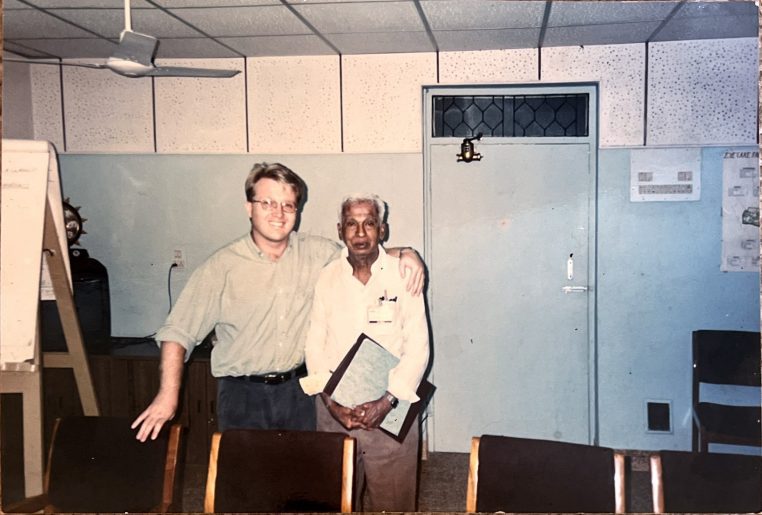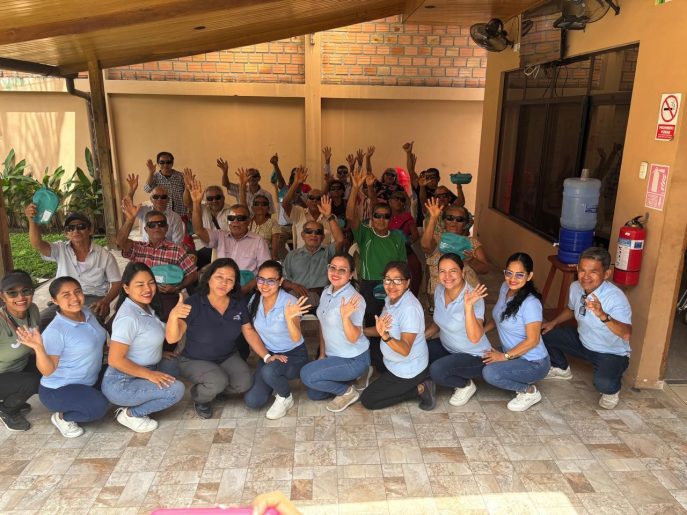By Talitha Bennett published originally in Healio
The WHO World Report on Vision shows the growing scale of vision impairment and indicates the importance of addressing it, according to the keynote presentation at the Prevent Blindness Focus on Eye Health National Summit virtual meeting.
“This is the first-ever world report on vision that the WHO has published. That reflects the recognition by the WHO of the importance of vision and eye care as part of universal health care coverage,” keynote speaker Peter Holland, CEO of the International Agency for the Prevention of Blindness, said during the meeting. “For the first time in one place we see the full scope and magnitude of the problem, and in doing so that emphasizes the urgency of this universal issue.”
Ethiopian Woman photo by (c) Deanne Berman
Holland said that at least 2.2 billion people around the world are currently living with visual impairment, and a report showed that at least 1 billion of those cases could have been prevented or have yet to be addressed. Additionally, he said it is estimated that by 2050, myopia will affect half the world’s population.
“The burden of vision impairment and eye conditions is not borne equally; it’s often far greater in people living in rural areas, those with low incomes, women, older people, people with disabilities, ethnic minorities and indigenous populations,” Holland said. “This impact goes much wider than health care. We do need more research on the broader impact of vision and vision impairment, but the research we have shows that it affects a whole range of areas.”
Holland said that research into tea pickers in India showed that their productivity increased by 20% to 30% if they had access to good eye care and glasses, with similar results seen in other studies. In education, eye care has also been theorized to be the “single most effective health institution for children.”
Holland said that research into tea pickers in India showed that their productivity increased by 20% to 30% if they had access to good eye care and glasses, with similar results seen in other studies. In education, eye care has also been theorized to be the “single most effective health institution for children.”
“What’s underpinning inequality in vision care is lack of access, whether it’s a lack of availability of service, accessibility or acceptability,” he said. “We’ll only see lasting and sustainable change when eye care is integrated into our mainstream health systems, whether those systems are public or delivered by the private sector and through the market.”
Cambodian cataract patient. Photo by (c) Ellen Crystal
Holland noted that the second reason the WHO World Report on Vision is so important is because it provides the strategic variables for tackling and improving eye care at a global, national and regional level.
The five key recommendations in the report include:
- Make eye care an integral part of universal health care;
- Implement targeted people-centered eye care health systems;
- Promote high-quality research;
- Monitor trends and evaluate progress; and
- Raise awareness and engage and empower people and communities.
“At the core of what they recommend is integrated people-centered eye care,” he said. “What they are arguing for is that eye care services need to be managed and delivered so that people receive a continuum of eye care attention, covering the full spectrum of services from promotion to prevention to treatment and rehabilitation.”
This eye care integration and coordination, according to the report, is needed at the primary health care level, but needs to connect up to secondary health care services such as hospital inpatient and outpatient settings, along with tertiary care in specialized hospitals and clinics.
Holland addressed the fact that the report was published October 2019, before the impact of the COVID-19 pandemic, which has affected the delivery of eye care services as much as any other health care service.
“One of the challenges for us is to keep this focus on eye health and on implementing these recommendations from the WHO in this current context,” Holland said. “We do have to recognize the impact of COVID-19, but at the same time we do have to make sure we don’t get sidelined. The World Report on Vision makes the argument for why eye care is important and the agenda on how to tackle it. Of course, the report alone is not enough. We need to mobilize the political world and persuade governments to adopt and implement the World Report on Vision’s recommendations.”
Reference:
- WHO Team: Blindness. (2019, October 8). World report on vision. World Health Organization. https://www.who.int/publications/i/item/world-report-on-vision



